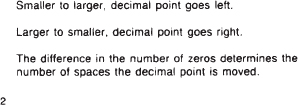Now you need to learn some abbreviation
Abbreviations
Kilo
K is the abbreviation for kilo, which equals 1000. If something has a frequency of 10 KHz, it has a frequency of 10,000 Hz. You can just replace the word “thousand” with “kilo.” Similarly, if you have a light in your TV studio that uses 1 KW of power, it is using 1000 W of power.
Mega
M stands for mega, or 1,000,000. So a generator that puts out 1 MW of power gives 1,000,000 W of power. If your favorite radio station has an assigned frequency of 96 MHz, it has a frequency of 96,000,000 Hz.
Giga
G stands for giga and is equal to 1,000,000,000. So a measurement of 6 GHz would be equal to 6,000,000,000 Hz.
K, M, and G are used for units that are greater than one. There are, however, several abbreviations that are used for measurements that are smaller than one.
Milli
The first of these abbreviations is m, which stands for milli and means 1/1000. If you took a measurement and it read 5 mV, that is read as five millivolts or five one thousandths of a volt. A measurement of 321 mA would be read as 321 milliamps or 321 one thousandths of an amp.
Micro
The next abbreviation is μ, which stands for micro and means 1/1,000,000. Thus, if you have a reading of 25 μsec, that is read as 25 microseconds or 25 one millionths of a second.
Nano
The last abbreviation is n, which stands for nano and means 1/1,000,000,000. So a measurement of 63 nsec would be read as 63 one billionths of a second.
2. Rules of conversion.


